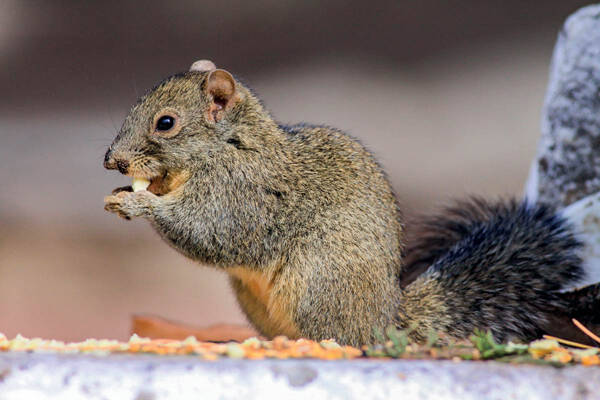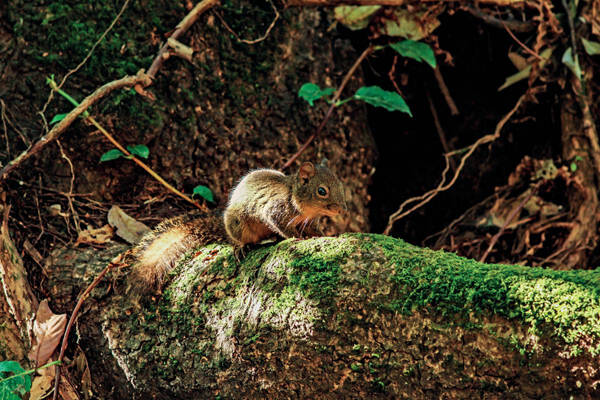Dremomys lokriah
IUCN
LCBasic Information
Scientific classification
- name:Dremomys lokriah
- Scientific Name:Dremomys lokriah,Himalayan orange-bellied long-nosed squirrel, Tibetan long-nosed squirrel
- Outline:Rodents
- Family:Rodentia Sciuridae Sciurus
Vital signs
- length:190~200mm
- Weight:
- lifetime:
Feature
Snout length is about 33.4% of skull length
Distribution and Habitat
In China, it is distributed in southern and southeastern Tibet and northwestern Yunnan. Abroad, it is distributed in India, Nepal, Myanmar, etc.
It lives in subtropical evergreen broad-leaved forests or mixed coniferous and broad-leaved forests at an altitude of 1500-3400m.
Appearance
The back of the body is olive-gray brown with slightly orange-yellow tips. The ventral surface of the body is orange-yellow from the throat to the base of the tail, with lighter hair on the chin, and slightly darker color on the groin and base of the tail than on the abdomen. The back of the front and back feet are similar to the back of the body, but the back of the front feet is slightly lighter. There are white spots on the back of the ears (slightly yellow). The tail has alternating black and light yellow rings.
Details
The orange-bellied long-nosed squirrel (scientific name: Dremomys lokriah) belongs to the family Sciuridae, also known as the Himalayan orange-bellied long-nosed squirrel and the Tibetan long-nosed squirrel. It usually lives in the cycad forest at an altitude of 1500-3400 meters or the woods at 2000-2600 meters. It feeds on nuts and plants, and occasionally eats insects. This species has a sharp call. The orange-bellied long-nosed squirrel breeds when the temperature is slightly higher from May to August each year, with 2-5 cubs per litter. It especially likes to move in the cycad forest. It builds nests in tree holes. It is diurnal, good at moving in the bushes, and moves quickly. It feeds on plant fruits, young branches and leaves, mushrooms and some epiphytes (such as usnea), etc., and also eats insects.

There are 4 subspecies of orange-bellied long-nosed squirrels, 3 of which have been found in China.
1. The fur on the back of the nominate subspecies is lighter, olive-gray, with a black stripe in the center of the back. It is found in places such as Nyalam, Tibet, and is distributed abroad in Nepal and northern Myanmar.
2. The back of the Medog subspecies is dark and dark olive in color, with no stripes in the middle of the back and a black tail tip. It is distributed in Medog and Bomi, Tibet.
3. The back of the Garoshan subspecies is dark and clear, between the first two subspecies; the chest and abdomen are orange-yellow and obviously concentrated in the midline of the body. It is distributed in Chayu, Milin and Conar, Tibet, and abroad in Assam, India and Myanmar.









